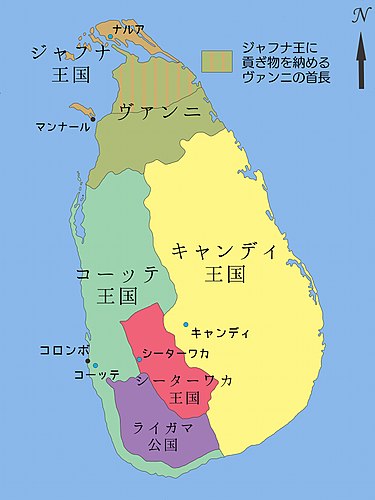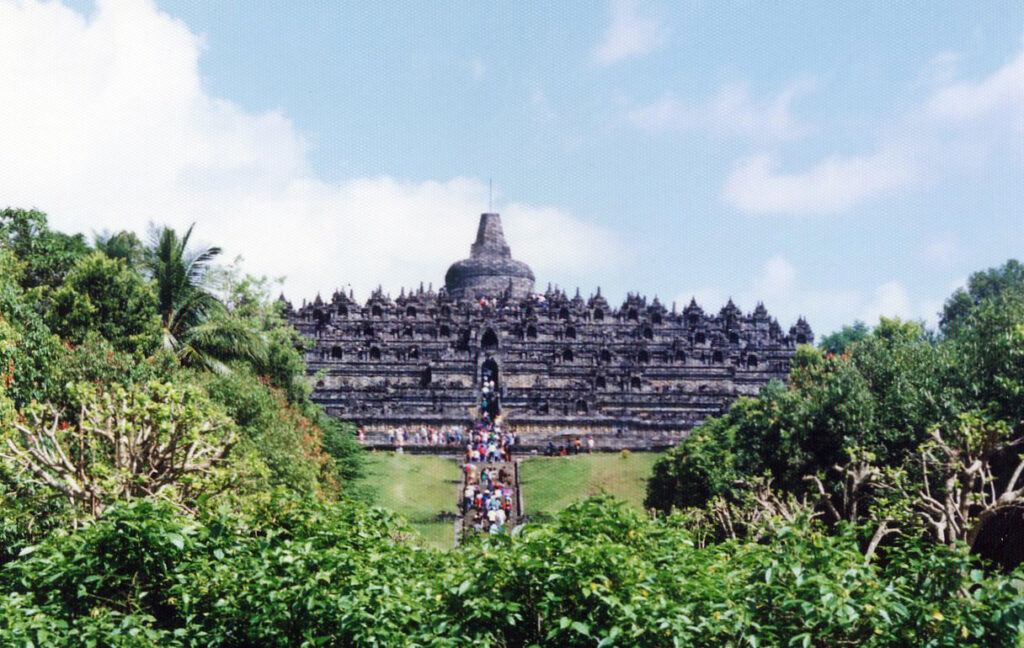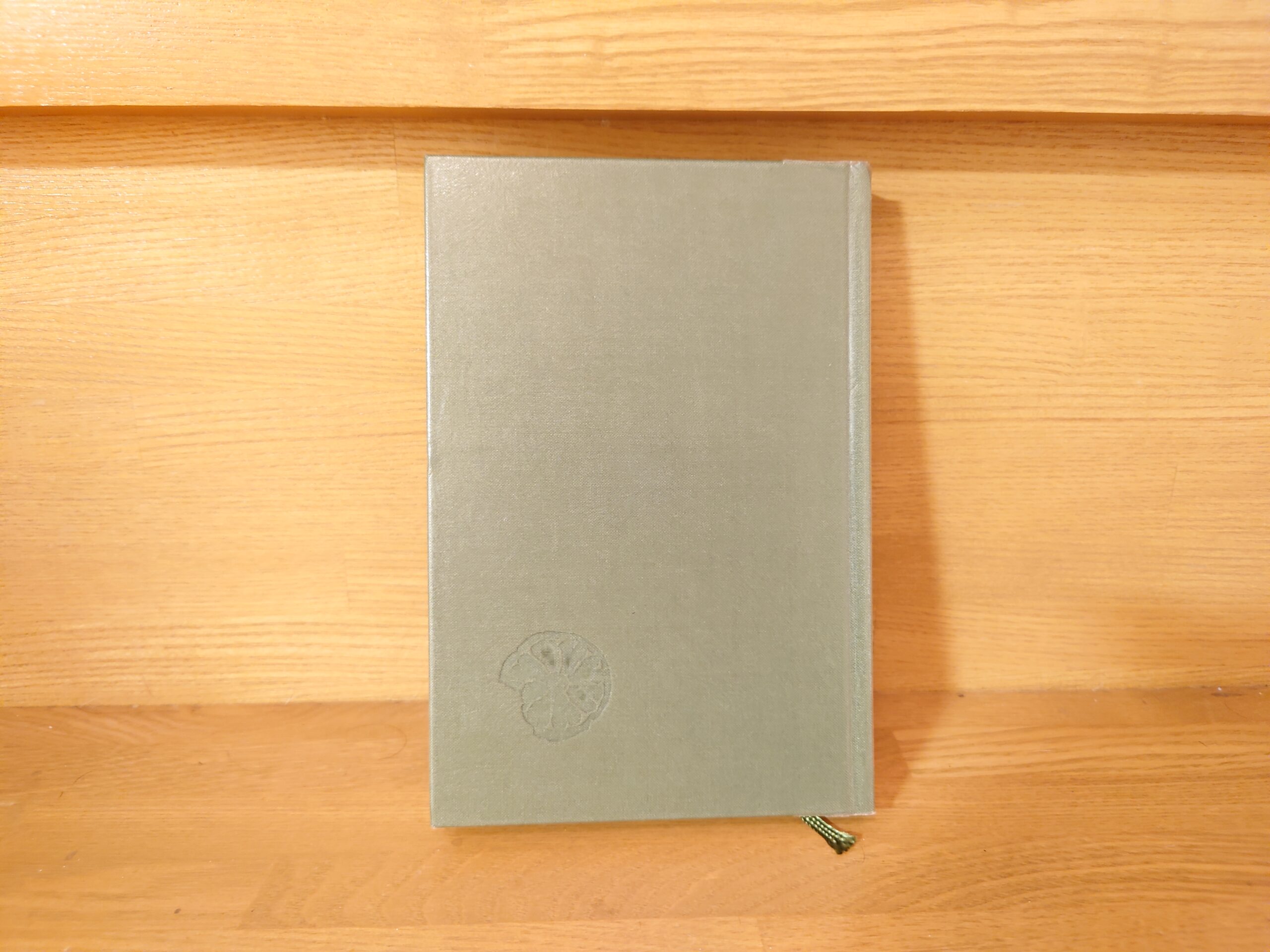Robert Knox's "The Ceylon Island Magazine" Synopsis and Comments - The amazing true story of the late 1600s, which was also the model for Robinson Crusoe!
The book introduced here is "Ceylon Island Magazine" written by Robert Knox and translated by Etsuji Hamaya, published by Heibonsha in 1994.
Let's take a quick look at the book.
This is a record of a British sailor who was captured on the island of Ceylon during a port call for repairs in the mid-17th century and spent the next 20 years as a prisoner of war. The descriptions of the island's flora and fauna, as well as the culture, manners, customs, and politics of its inhabitants, are valuable documents that shed light on the inland areas then under the rule of the Kingdom of Kandy.
AmazonProducts Page.
Robert Knox (1641-1720), the author of this work, was a sailor on a trading ship of the British East India Company. His ship was caught in a storm during a voyage in the Indian Ocean and made a port call in Ceylon (Sri Lanka) in 1660. From there, they lived as prisoners of war in the Kingdom of Kandy in central Sri Lanka for almost 20 years.

This image is from Sri Lanka in the 1520s, so it is different from the time Knox was taken prisoner, but I think you can get a sense of the location of the Kingdom of Kandy and its capital, Kandy, where he was captured.
Kandy is an ancient city in the highlands of inland Sri Lanka, famous for the Buddha's Tooth Temple, where Buddha's teeth are enshrined.
The area around Kandy was not only highland, but also covered with deep jungle, making it extremely difficult to move around. In other words, it is an isolated island on land. This book, "Ceylon Island Journal," describes Knox's experience of escaping from such a difficult situation over a period of 20 years.
Let's take a look at the translator's commentary on this book.
This book is a translation of An Historical Relation of the Island Ceylon, published in London in 1681 by Englishman Robert Knox (1641-1728), who wrote about his nearly 20 years of captivity in the Kingdom of Candy, Ceylon. An Historical Relation of the Island Ceylon, published in London in 1681.
The original work is said to be the first record in English of Ceylon Island, which later became a British colony, but it is not only that; it is also an excellent record of the Kingdom of Kandy as a general geography and of the internal affairs of the island, which were largely unknown to Europeans at the time. In addition, the author's own personal experiences are described in the book, which was so well received immediately after its publication that King Charles II of England invited the author to his court. It was eventually translated into French, Dutch, German, and other languages, and was also one of the seed books for Daniel Defoe's (1660-1731) famous novel "The Adventures of Robinson Crusoe" (first published in 1719).
Heibonsha, Robert Knox, translated by Etsuji Hamaya, Ceylon Island Magazine, p. 390
It is amazing that it was also one of the models for that "Robinson Crusoe Adventure". It was such a work that caused a great sensation in Europe.
Let's look at this work further. Here are some surprises.
The main part of this book is, of course, the main text, which consists of four parts, but the recommendation, dedication, and preface at the beginning of the book are also important, so I would like to mention them briefly. When the original book was published, no European had ever returned from 20 years of internment in the interior of Ceylon, so the more detailed the purported conditions in the interior, the more the authenticity of the book might be questioned. Today, it has been verified that, with a few exceptions, all of the original texts are accurate, and the few factual inaccuracies are not the result of intentional misstatements or distortions by the authors. However, at that time, there was no way to prove the authenticity of the contents. Therefore, we have included excerpts from the minutes of the Board of Directors of the East India Company, a letter of recommendation sent by Sir Christopher Wren (1632-1991), President of the Royal Society, to Richard Chiswell (1639-1711), the publisher, a dedication presented by the author to the President and Directors of the East India Company, and the author's own letter of recommendation to the President and Directors of the East India Company. The author's dedication letter to Richard Chiswell (1639-1711), a foreword written by Dr. Robert Hooke (1635-1703), Secretary General of the Royal Society, and other documents reiterate how trustworthy the author is and how excellent the contents of the book are.
Heibonsha, Robert Knox, translated by Etsuji Hamaya, Ceylon Island Magazine, p. 391
I was struck by Robert Hook at the end of this quote. I was surprised that there was a connection to Robert Hook here.
I have to say that I also came to know Robert Hooke in the course of my previous study of Vermeer.
Micrographia."It is amazing that this renowned scientist who wrote the book "The Ceylon Islander" praised this book and even wrote the foreword. It is one of the greatest joys of learning that what we once learned is connected in unexpected ways. This was a delightful read.
Let's continue with a look at the contents of this book.
The first thing that struck me when I read the actual contents of the book was the single word "wonderful record. The natural conditions, products, culture, social structure, and life of the common people of Ceylon, as well as the author's own experiences as a prisoner of war, are all vividly described in vivid strokes, and I think it is safe to say that this is the best work ever written by a single person. Although he stayed in Japan for nearly 20 years, he was a prisoner of war who did not understand a word of the local language, which was quite a feat considering his status as a single sailor. He started sailing at the age of 14, and his education by his father (the ship's captain) until he became a POW at the age of 19 probably focused mainly on navigation and trade. After his capture, he must not have had any opportunity to acquire any systematic knowledge. Considering this, the accuracy of the wide range of records is even curious. The factual and observational descriptions have not lost any of their freshness even after more than 300 years, and have not lost any of their first-class value as a reference work on Sri Lanka. I do not know of any other book that can compare with it as an introduction to Sri Lanka in general in a single volume.
Heibonsha, Robert Knox, translated by Etsuji Hamaya, "Ceylon Island Magazine," p391-392
I felt exactly the same after reading this book. Robert Knox is a monster! I wondered how he could write in such detail and clarity and make it even more interesting to read. More than half of the book is devoted to observations of the people, geography, and society of Candi. It is a first-rate work in itself, with vivid descriptions of people's lives at the time.
In the second half of the film, a thrilling escape from the Candy Kingdom, from which it is difficult to escape, unfolds. It is also very interesting and full of realism. I can only take my hat off to the author for writing this in the latter half of the 17th century. This is an amazing work. I can see why it became the model for "Robinson Crusoe.
It is no wonder that the translator gave the above praise to this work. It is a shame that this book is not well known in Japan.
And I decided to read this book because I had originally studied Buddhism in Sri Lanka.
Here I would like to share two interesting statements that are also relevant to Buddhism.
The first is about leeches that appear during the rainy season. Some of you may wonder what this has to do with Buddhism. You may wonder what this has to do with Buddhism, but read the book first.
There is one species of leech that looks exactly like the British one, differing only in color and size. It is dark red like bacon, about the thickness of a goose pen and two to three inches long. But when they are newborn and small, they are not as thick as a horsehair and are not easily seen. They do not appear during the dry season, but as soon as it starts to rain, the forests and grasslands are filled with leeches. It is customary in this country to go barefoot, and leeches swarm around the feet of travelers, hanging on to them, and when they have had their fill of blood, they drop off. The number of leeches biting is so great that no matter how fast one rushes, it is impossible to catch all the leeches crawling up. Blood drips from the traveler's feet all the way down the road, which is quite painful, and people hope that if possible, the leeches will not get to them. This is especially true for those who have wounds on their feet. This is because all the leeches gather in the wounds.
Some people prepare a piece of lemon and salt wrapped in a rag and tied to a stick, which they frequently tap on their feet to prevent leeches from catching them. Others shave the reeds into a flat, sharp knife-like shape and scrape the leeches off with it. However, all of these methods are tedious and cumbersome, and since leeches are so numerous and crawl up one after another, none of the methods are effective despite the effort involved, and people are left to let the leeches bite and stick to them throughout their journey. In the end, the people patiently endure and tolerate the situation, thinking that letting the leeches suck their blood may be beneficial to their health. When they reach their destination, they scrub both feet thoroughly with ashes to clear away the leeches, but that does not stop the blood from dripping for a long time. The most annoying thing about leeches, however, is when they go outside to do their business during the night. Their small size and dark color make them difficult to spot, and if they get stuck on you, you can't pull them off. In some places in this country, leeches are abundant, but in others they are completely absent, and in some places you never even hear of them. In addition to the leeches mentioned above, there are also aquatic leeches, just like those in England.
Heibonsha, Robert Knox, translated by Etsuji Hamaya, Ceylon Island Magazine, p. 85-86
How is it? It is spectacular, isn't it? I could never be in a situation like this. Just imagining it is terrifying.
The reason why this has something to do with Buddhism can be traced back to the Buddhist custom of "rain-abstinence. Originally, during the reign of the Buddha, monks basically lived their lives as itinerant monks without settling down, but during the rainy season, they stopped moving and began to settle down to spend their time.
It is often explained that the reason why they did this was to avoid killing animals and insects by stepping on them during the rainy season, when it rains heavily and makes it difficult to move around.
But Knox's words above make me imagine that they were often physically attacked by swarms of these leeches and mosquitoes. And since there was a commandment of non-killing, you can't even peel off the blood-sucking leeches. This is harsh!
Yes, I think the main reason was to avoid killing them by stepping on them, but I also wondered if there was a practical reason to physically protect oneself from this swarm of leeches. I don't know the actual reason, but Knox's description was graphic enough to make me think so.
And here is another one.
The king's policy is to make the kingdom as intricate and difficult to move around as possible, and to this end he forbids the cutting of forests, and is particularly strict about the forests that separate regions from regions. Furthermore, he does not allow rivers to be bridged or roads to be widened.
Heibonsha, Robert Knox, translated by Etsuji Hamaya, Ceylon Island Magazine, p. 126-127
This may seem like an ordinary place, but to me, it's like "Oh, that's how it is! That's how it is!" I wanted to hit my knees and say, "That's what you mean!
I have always wondered why it is so common in Asia that huge Buddhist monuments, such as the ruins of Ajanta in India or the Borobudur in Java, are forgotten and only discovered by Westerners hundreds or even thousands of years after their discovery. I felt that one of the answers to this question could be found here.

In particular, I visited the Borobudur ruins when I was a student, and found a huge Buddhist monument standing alone in the middle of the jungle. I had always wondered why such huge ruins had been forgotten and neglected.
But when I read Knox's analysis above, I had an epiphany. For a kingdom in the jungle, the jungle is a natural fortification for the defense of the country. To clear the jungle and build a road through it would create a path for the enemy to attack, and would also mean the loss of cover for a surprise attack.
The Kingdom of Kandy also made maximum use of this dense forest to defend itself against the Western powers of Portugal and the Netherlands, leaving it difficult to even travel through.
This makes it somewhat possible to imagine that Ajanta and Borobudur were closed up in the jungle, forgotten and undiscovered.
It is no wonder that Anuradhapura, now a sacred Buddhist site in Sri Lanka, remained almost deserted until the late 20th century. It is not easy to get there, and it is not easy to live there or to maintain it.
It was also very interesting to learn about Sri Lanka from the perspective of national defense using the jungle.
I have introduced the above two points in this article, but I am sure that the genres of interest will differ from person to person. So, I am sure that each person has his or her own interests and will be able to find something that is of interest to him or her! I didn't know that! I am sure that each person will discover something new.
The thrilling story of the escape at the end of the book is superb, and the description of the Sri Lankan situation from the first half of the book is very interesting, making this work a definite classic.
This is a wonderful book that I hope many people will pick up.
This is the "Robert Knox's "Ceylon Island Magazine" Synopsis and Impressions - The Amazing True Story of the Model for Robinson Crusoe!" The above is a summary of "The Ceylon Island Magazine" by Robert Knox.
Next Article.
Click here to read the previous article.
Related Articles





































